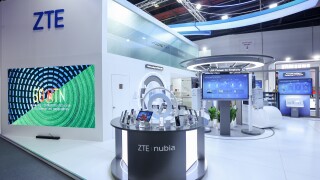Bandwidth need, fast scalability, ultra-broadband access and convergence: these are the keywords that all people in Fastweb, one of the main telecom players in Italy, have clear in mind.
Some consumption behaviours became common to different market segments: for consumer and business alike, the demand is growing for bandwidth, seamless experience through different devices and powerful Wifi technology in mobility.
Infrastructure is the base to all that and it’s this can open to future innovation.
That’s why Fastweb on one hand headed to 5G evolution, while on the other hand undertook a transformation process of the Long Distance National Network with the aim of obtaining the best network available with the best technologies that the market can provide: from here the FON (Flexible Optical Network).
Pietro Pelizza, head of sales for Fastweb wholesale’s division, explains how this can benefit international operators that need to take their business to Italy.
What are the main innovations of the new network infrastructure?
The main goal of the new FON network is to interconnect the main Fastweb PoPs throughout the Italian territory through advanced techniques for consolidating and optimising bandwidth usage. To this, a high level of availability has been achieved thanks to the introduction of advanced protection and restoration mechanisms, automated by an optical and electrical GMPLS control plane.
The introduction of the OTN technology, in fact, allows automatic re-routing of traffic along the backbone lines even in case of multiple fibre cutting or failure of an intermediate node.
Moreover, the FON network is capable of collecting GE or 10GE traffic and transporting it online on 100GB or, where possible, even superior optical carriers (200GB and 400GB). It also allows the delivery of native 100GE signals.
All of these features enable Fastweb to make a major technological step on the entire photon transport level of the network with direct implications on enhancing the average reliability of the services provided by this network, on the ability to follow the bandwidth trend demanded by the market.
What benefits can international operators draw?
This network definitely makes it possible to have an alternative to Marseille, dropping the wet capacity in Sicily and transporting the data traffic to the European internet hubs, through a new terrestrial route.
The traffic flowing from Sicily is steadily growing: with the aim of offering a neutral solution to traffic aggregation, Open Hub Med was born: a data centre founded with the goal of creating a credible alternative pole, able to respond effectively to the ever-stronger demands of telco actors.
Other initiatives in favour of international operators?
The new network hence described is the strategic asset that meets the growing need for bandwidth, flexibility and reliability of the operators. A second essential asset, complementary to the network, is the availability of data centres. Fastweb was one of the first operators in Europe to build a Tier IV certified data centre in Milan and is now planning to build a second analogous facility in Rome. Through the work of the wholesale division, Fastweb is also interconnected to all major Italian data centers and is a founding member of Open Hub Med, the first alternative data centre for collecting and routing traffic from landing stations.
Regarding access instead? Are there any evolutions in this area too?
Fastweb considers the development of the ultra-broadband offer, in every market segment, and throughout the whole country, a priority to continue investing. The wholesale division also follows the company’s commitment to providing the best access technology available for Layer 2 services as well as VPN and DIA. The service platform that customers can rely on, continues to grow, including the new available access technologies: FTTH, FTTS and GPON, both proprietary and held by third-parties because the wholesale division aims to represent a one-stop shop for telecommunications operators.




